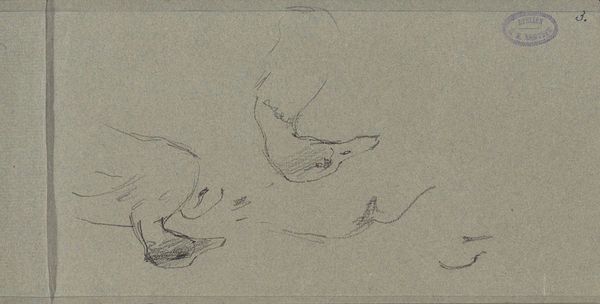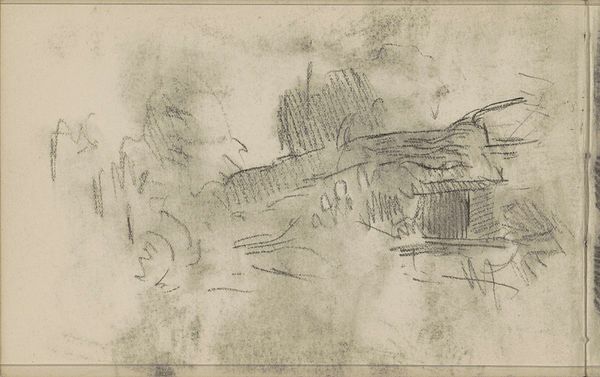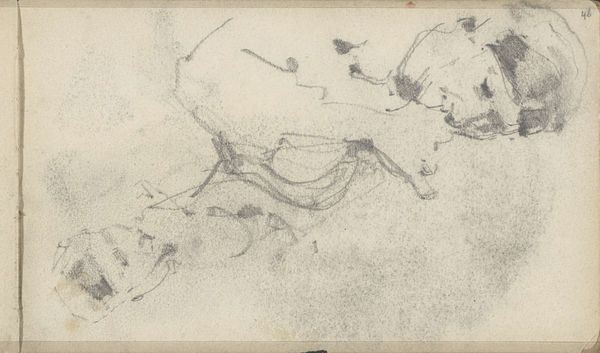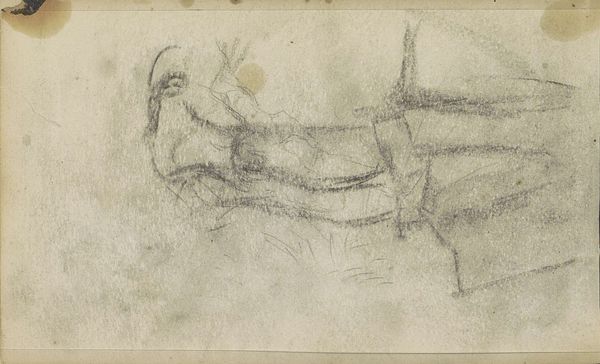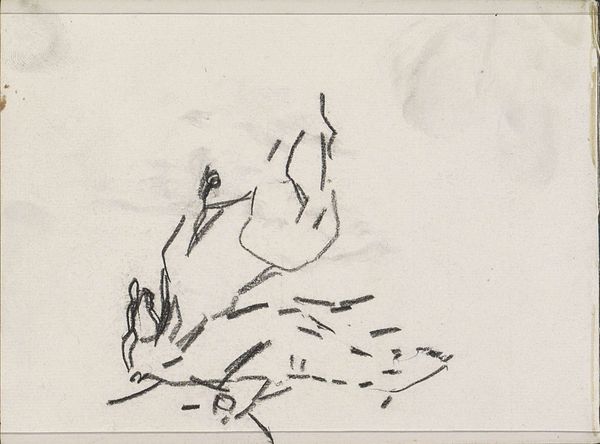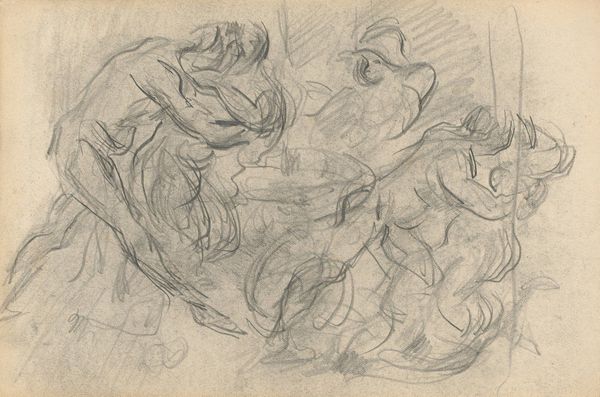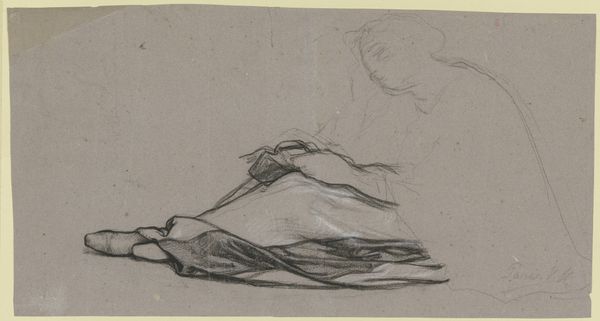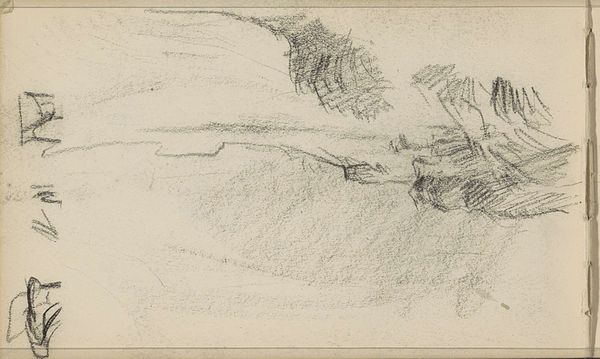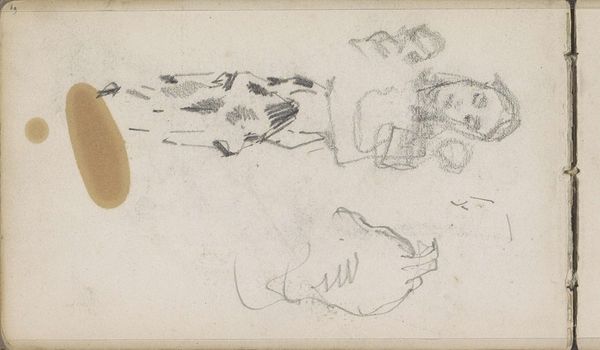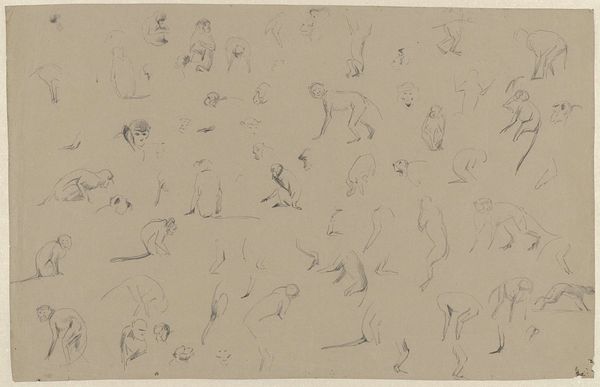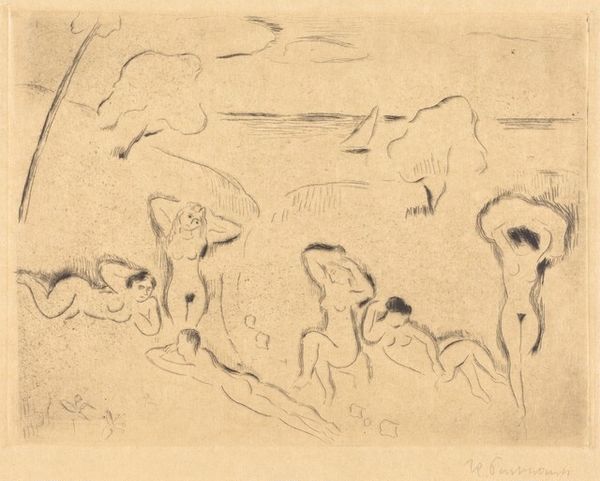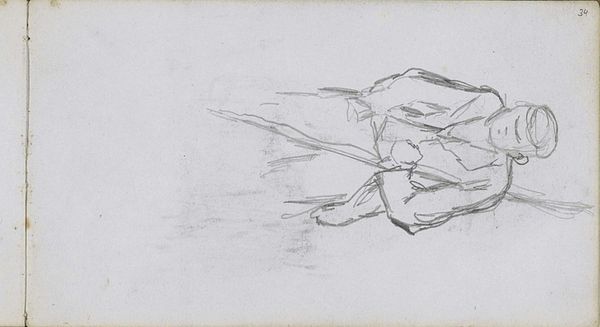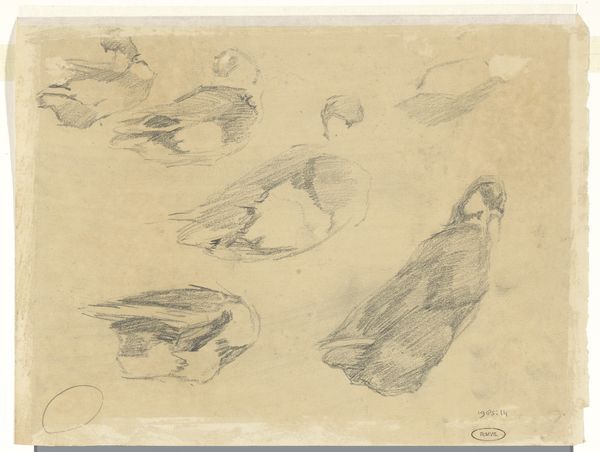
Copyright: Rijks Museum: Open Domain
Curator: Here we have "Eenden", created between 1881 and 1927 by Johan Antonie de Jonge, an intriguing study rendered in pencil on paper. Editor: It has this beautiful, fleeting quality—almost as if the artist captured these ducks in a momentary reverie by the water’s edge. Very dreamlike. Curator: Indeed, the rapid, impressionistic strokes create a sense of movement and spontaneity. If we consider the arrangement of these avian figures, we can note the dynamic interplay between positive and negative space. Editor: Absolutely. It's like a dance on the page. And the smudging of the pencil, gives it that real, lived-in sketchbook feeling – as if the artist's own breath smudged the image into being. You can almost smell the river! Curator: Note how each duck, though quickly rendered, possesses its own unique posture and form. It displays a mastery of line and tone—the delicate gradations of shadow and light. In this, de Jonge demonstrates a keen observational skill paired with profound artistic sensibility. Editor: What do you think he wanted to say through the series? Was he a nature-lover with an intention to remind the public of the necessity for us to coexist in peace with nature or was he merely driven to portray this beauty to document a mundane sight of waterfowl? Curator: His intentions, like the drawing itself, remain wonderfully elusive! Whether study, preparation, or something greater, this piece compels our gaze. Editor: A piece that celebrates the everyday, the grace in the ordinary! "Eenden", though unfinished, speaks volumes—it’s proof that art doesn’t always need grand pronouncements. Sometimes, it simply needs to share the quiet beauty of a flock of ducks.
Comments
No comments
Be the first to comment and join the conversation on the ultimate creative platform.
